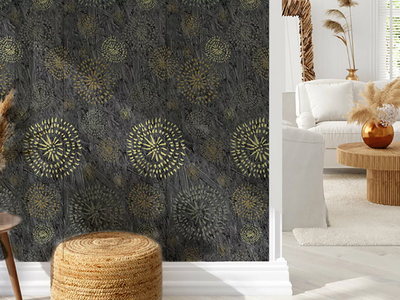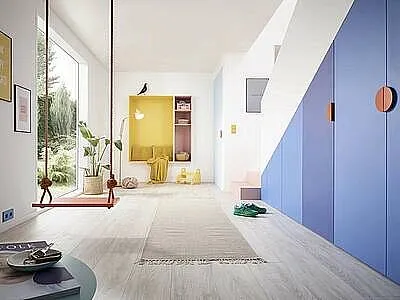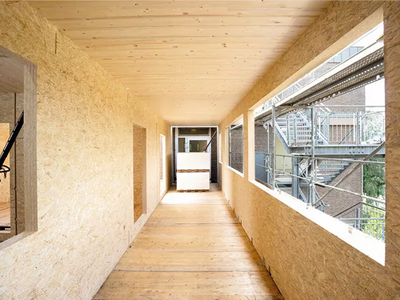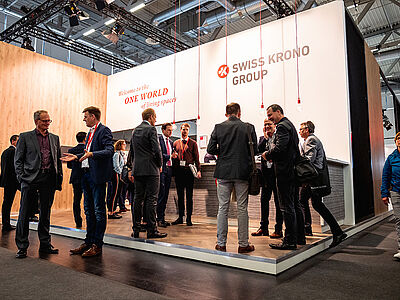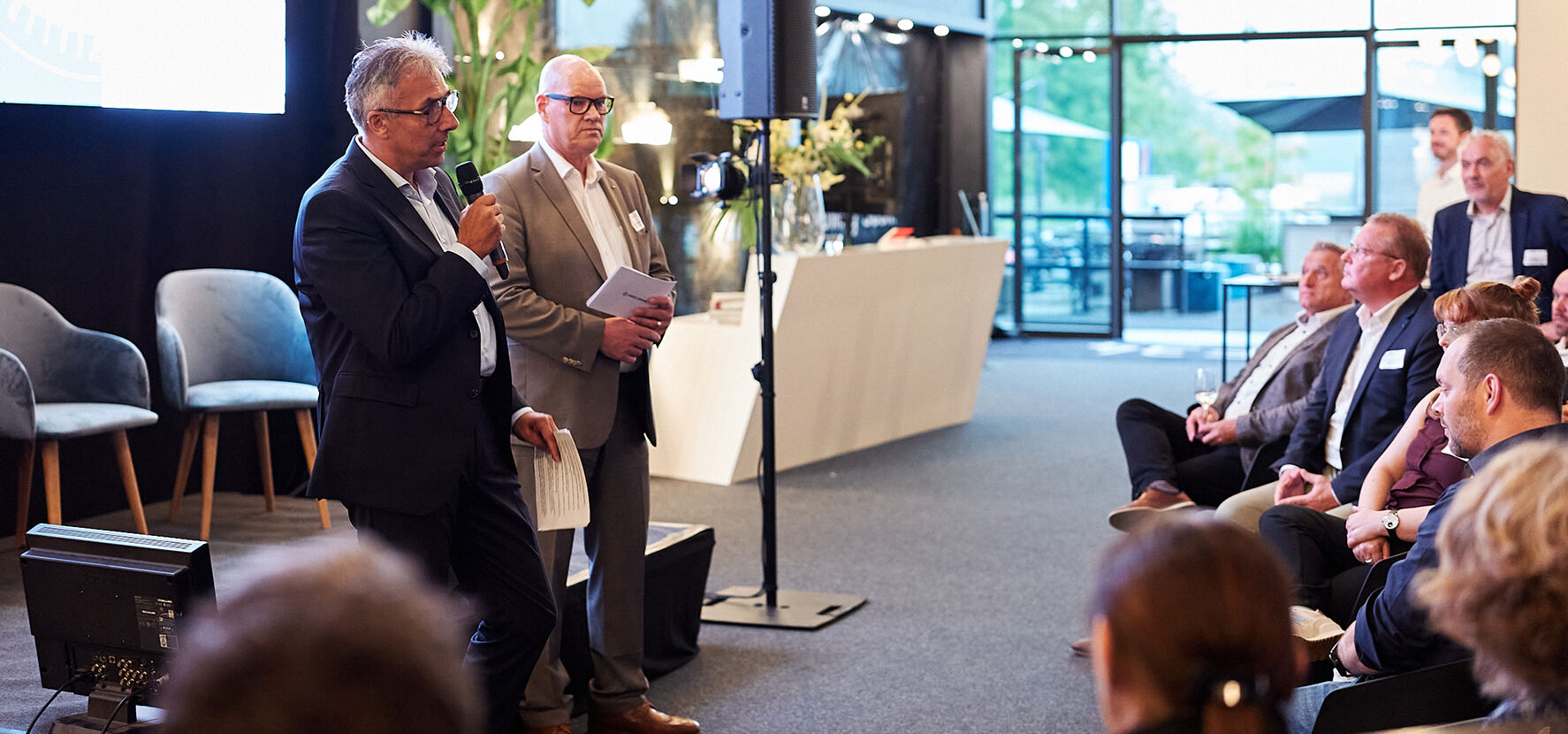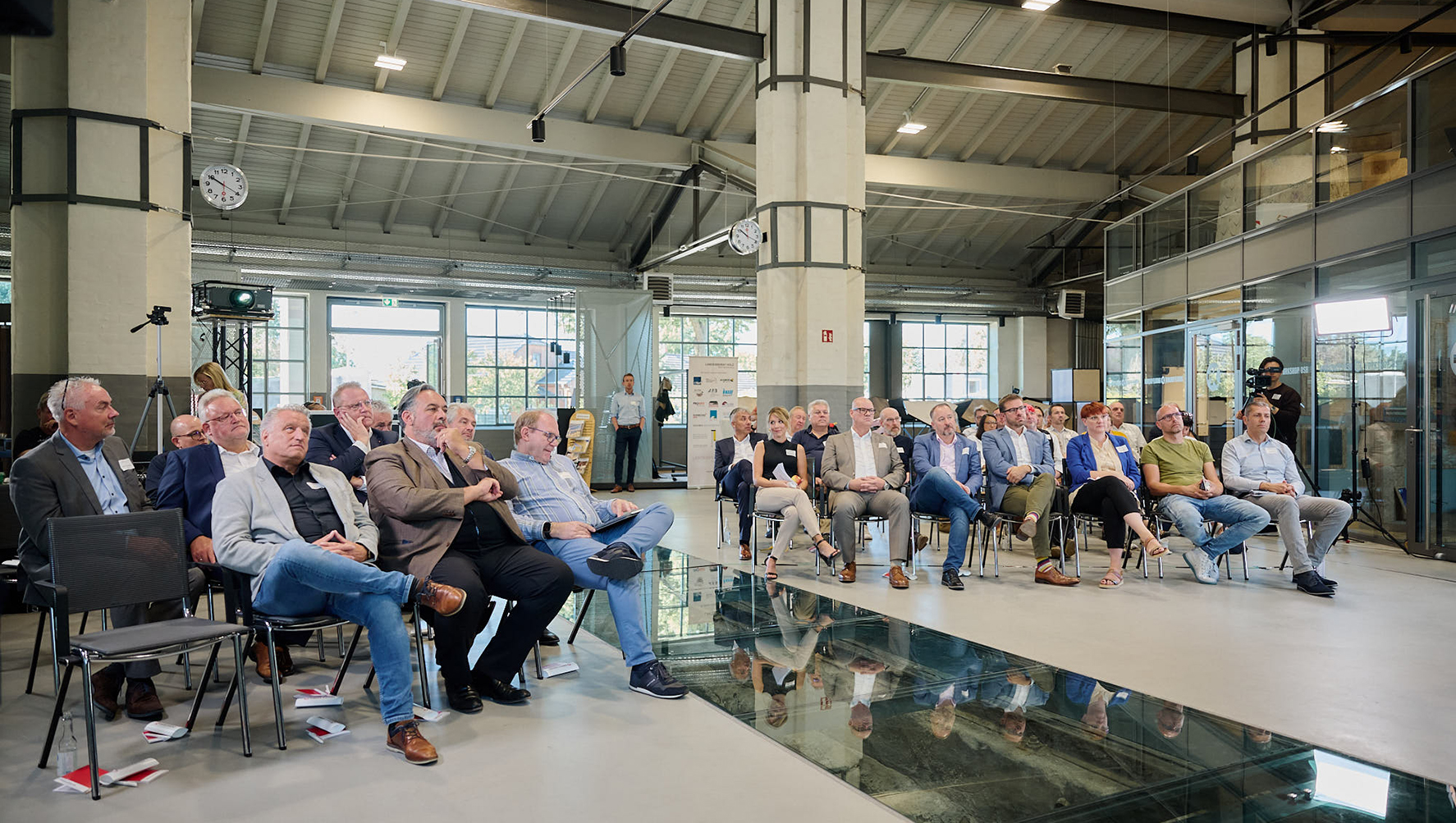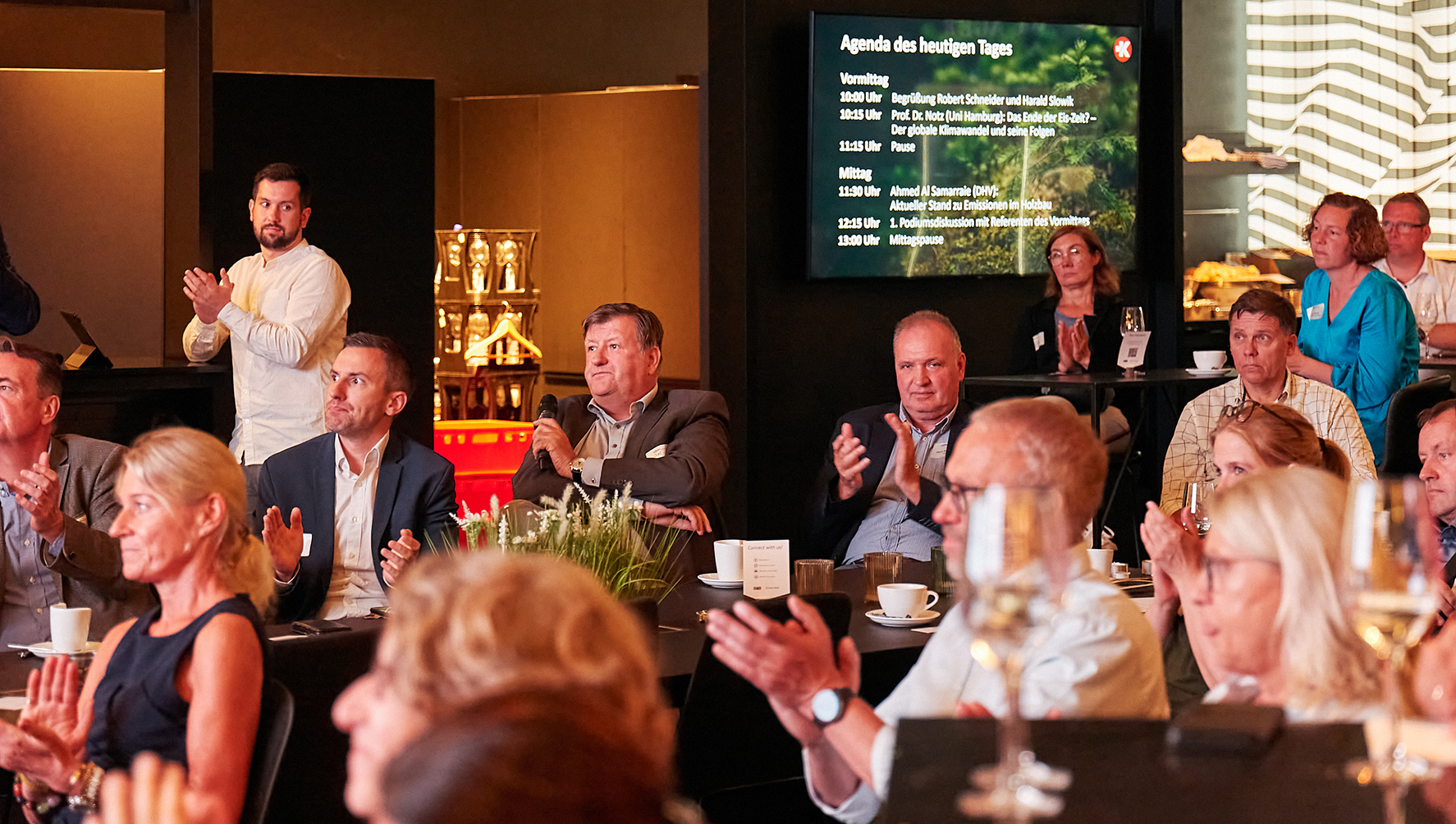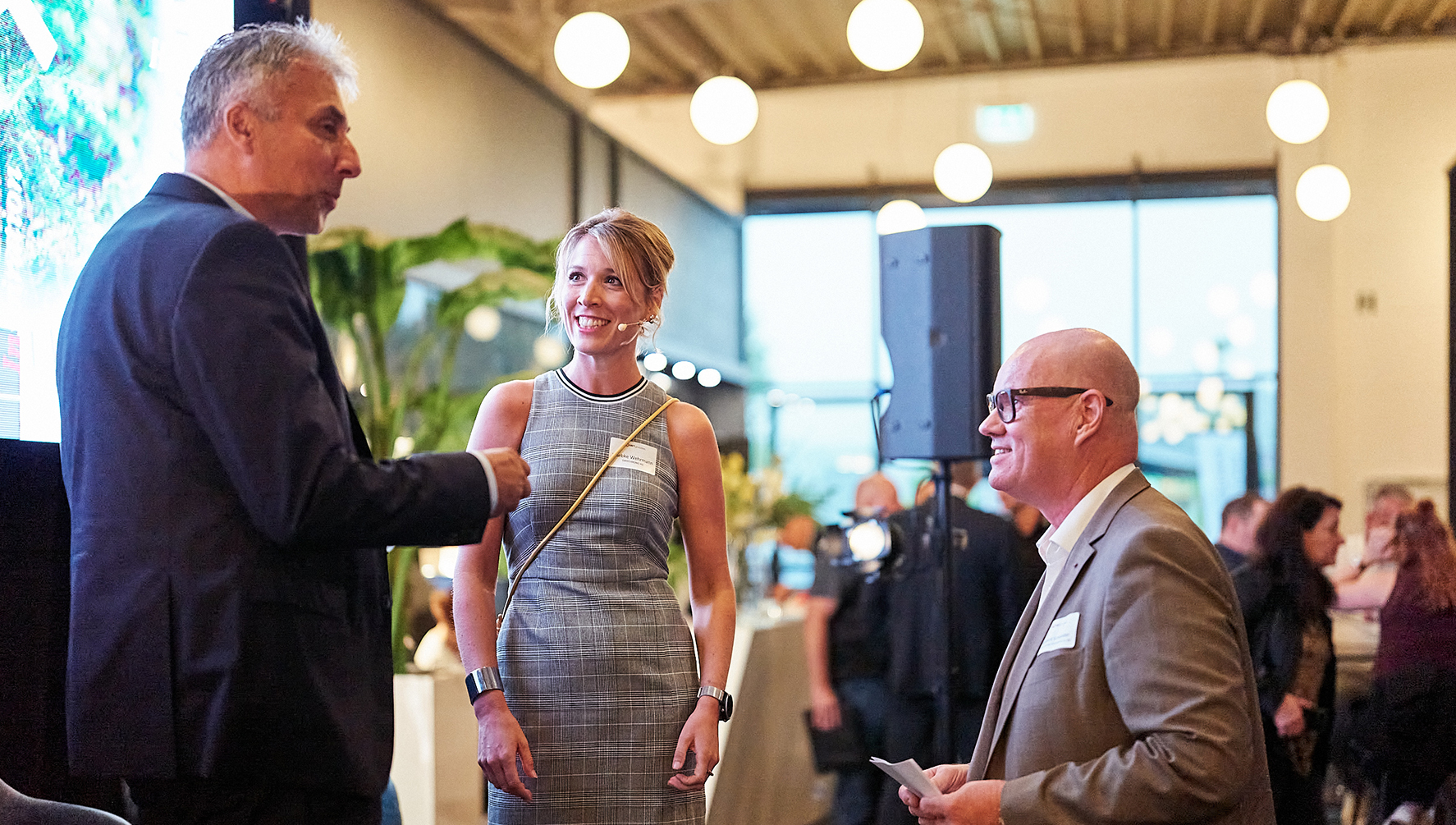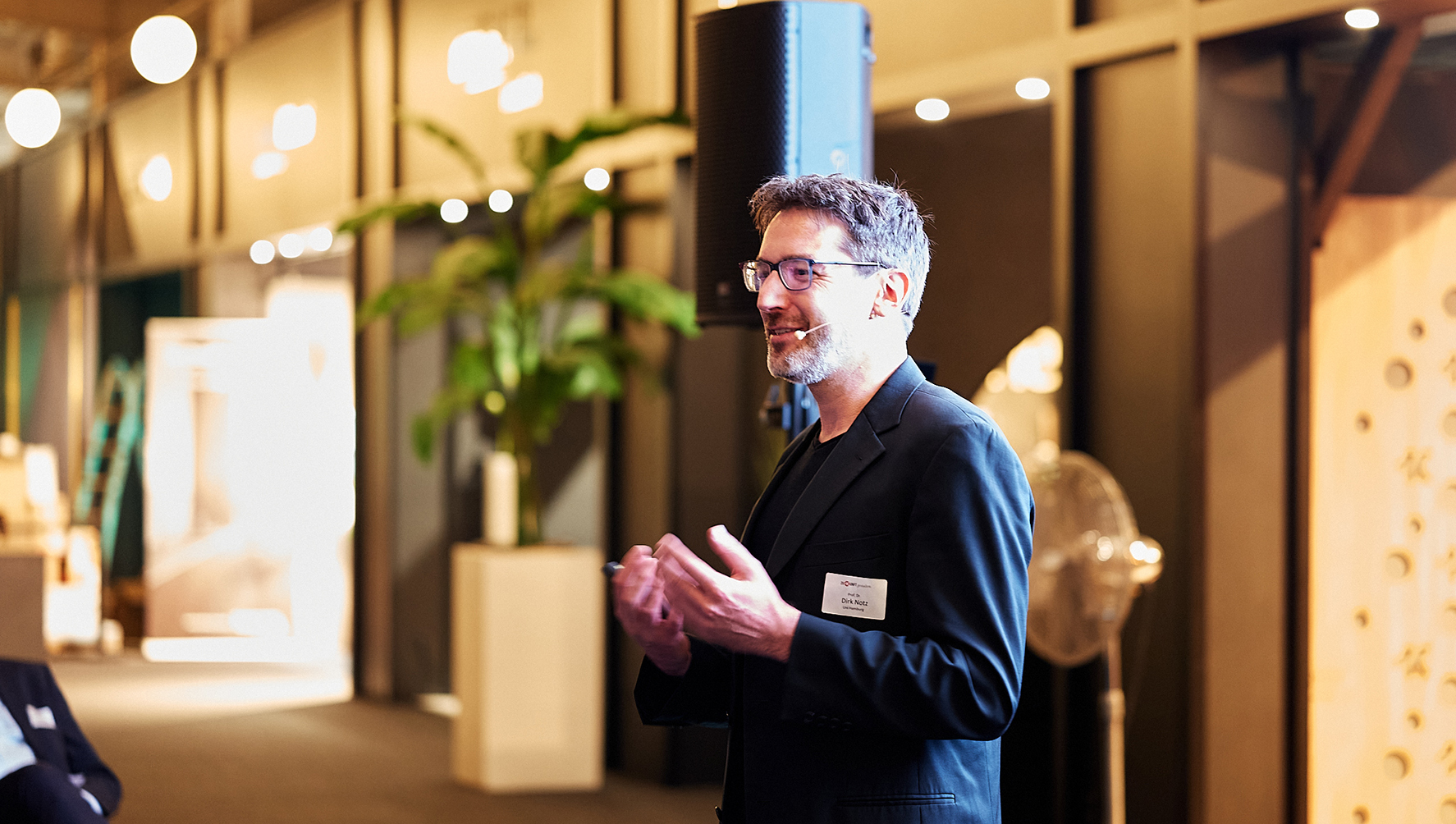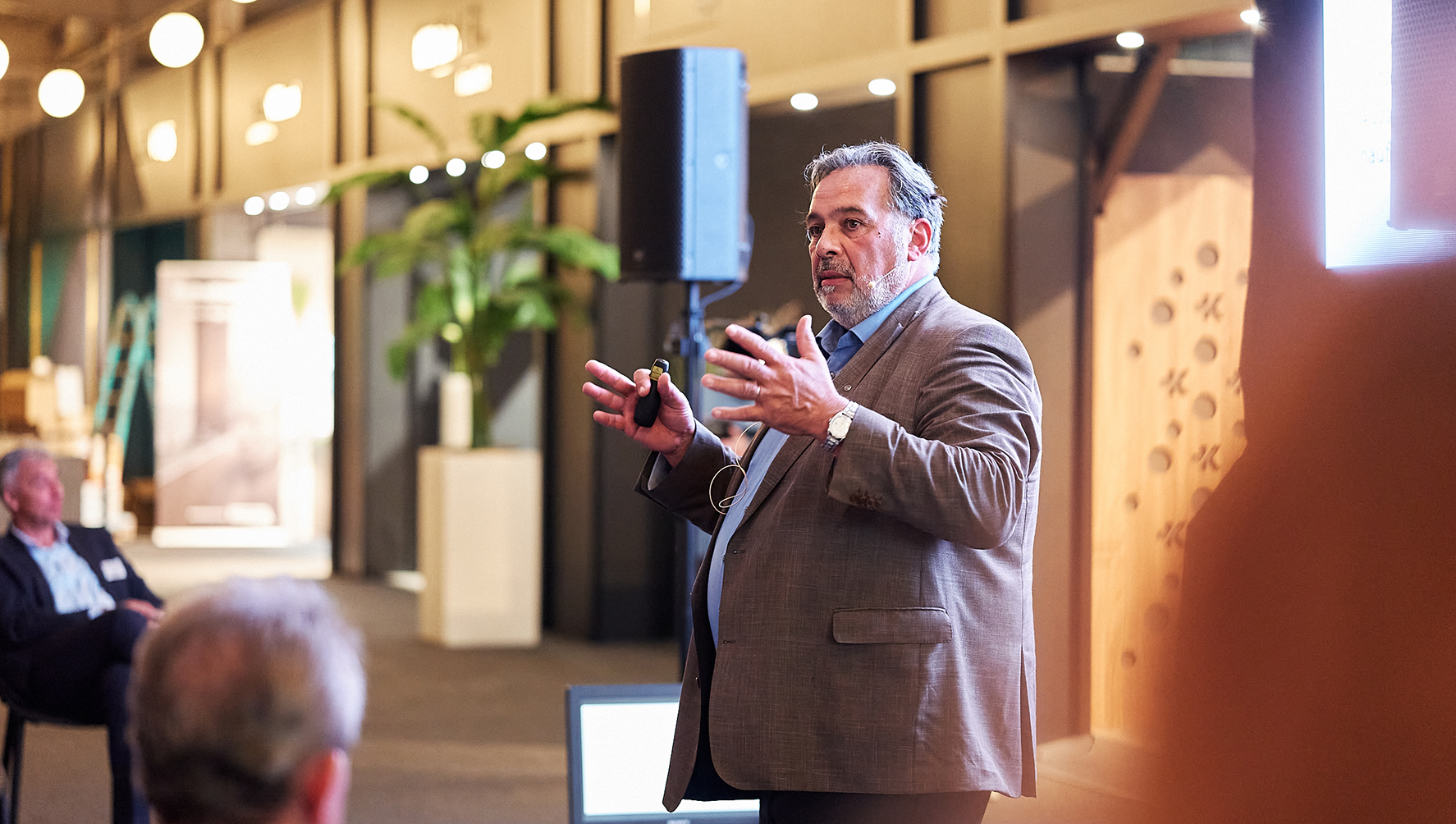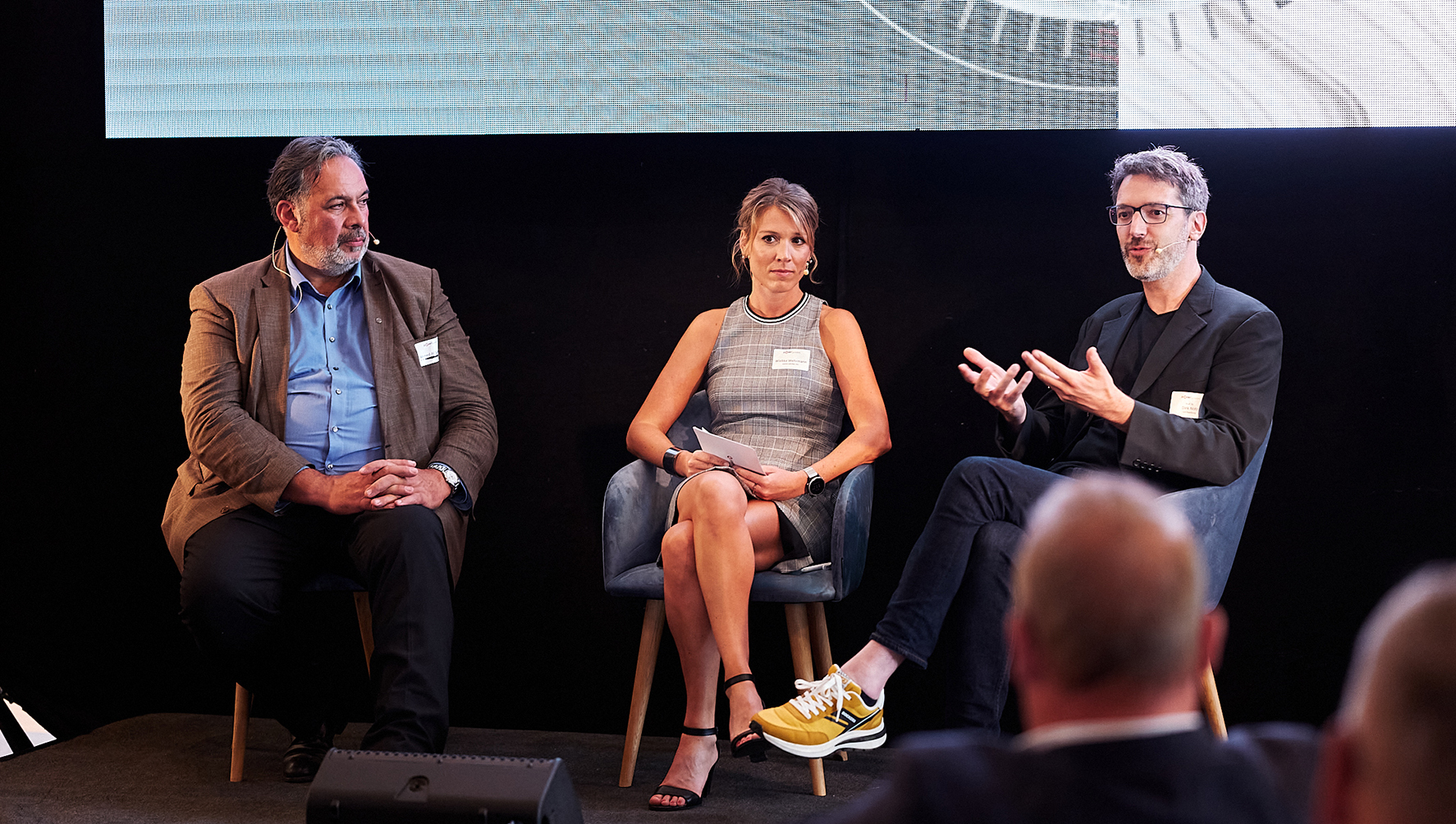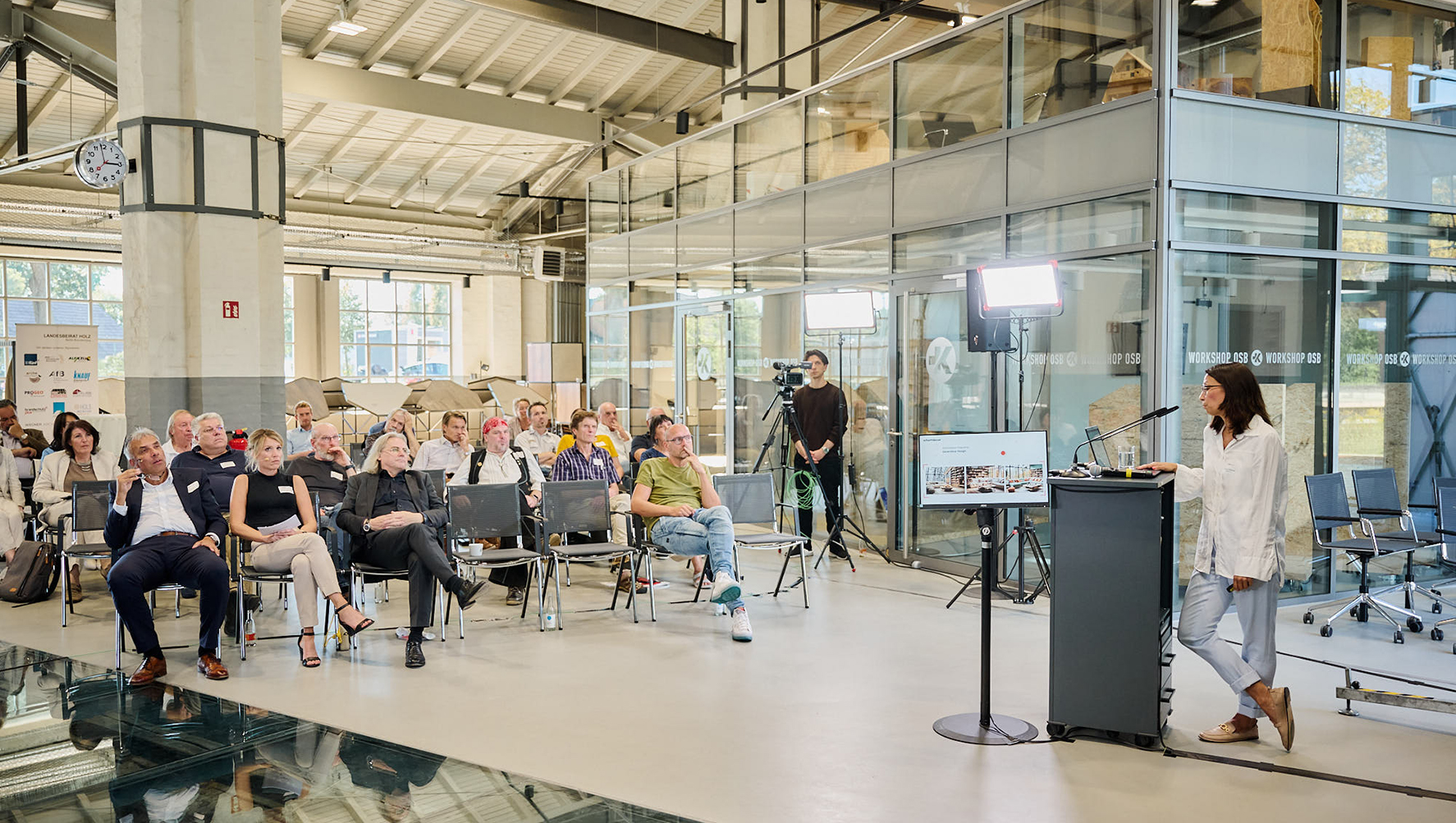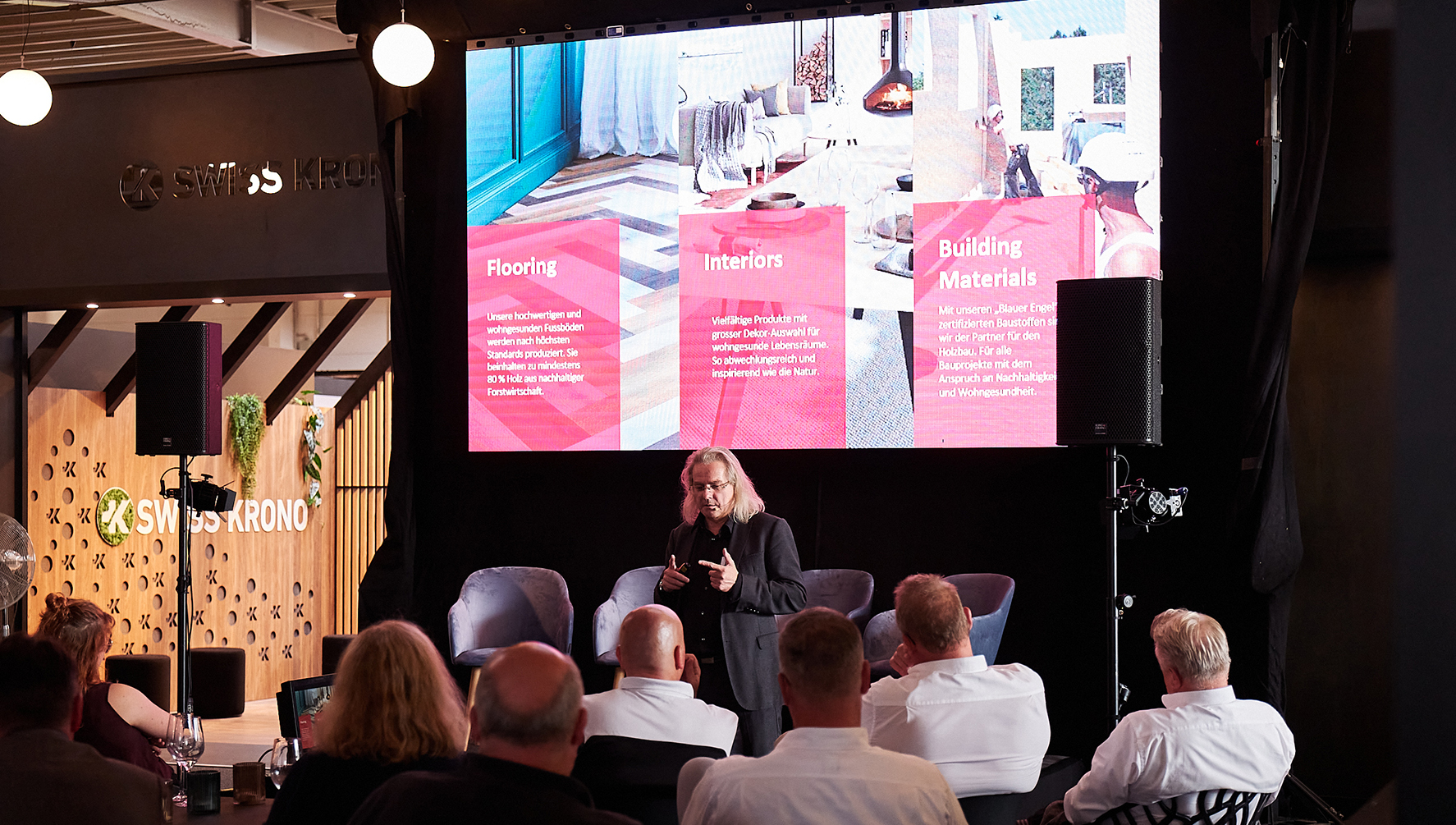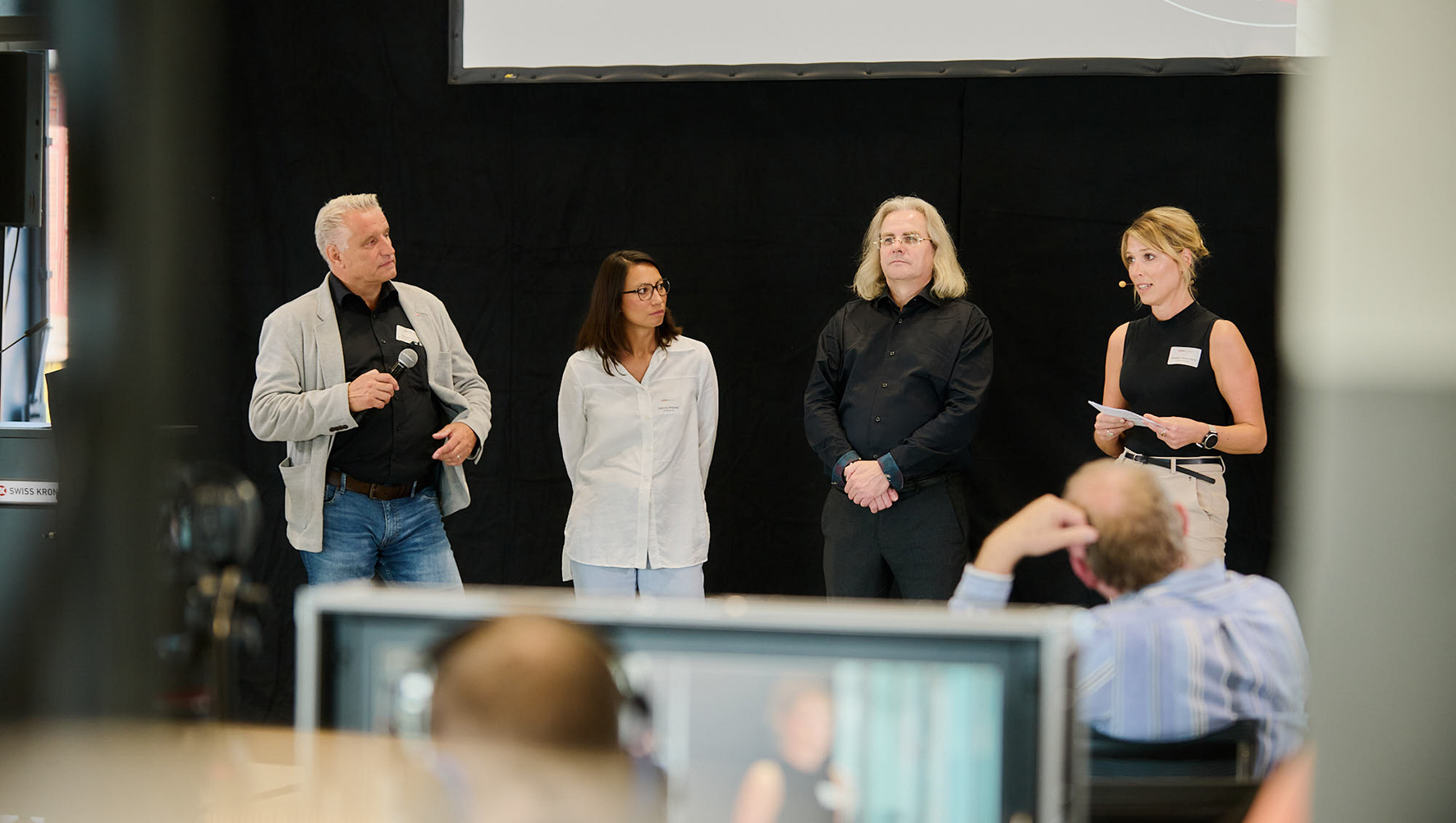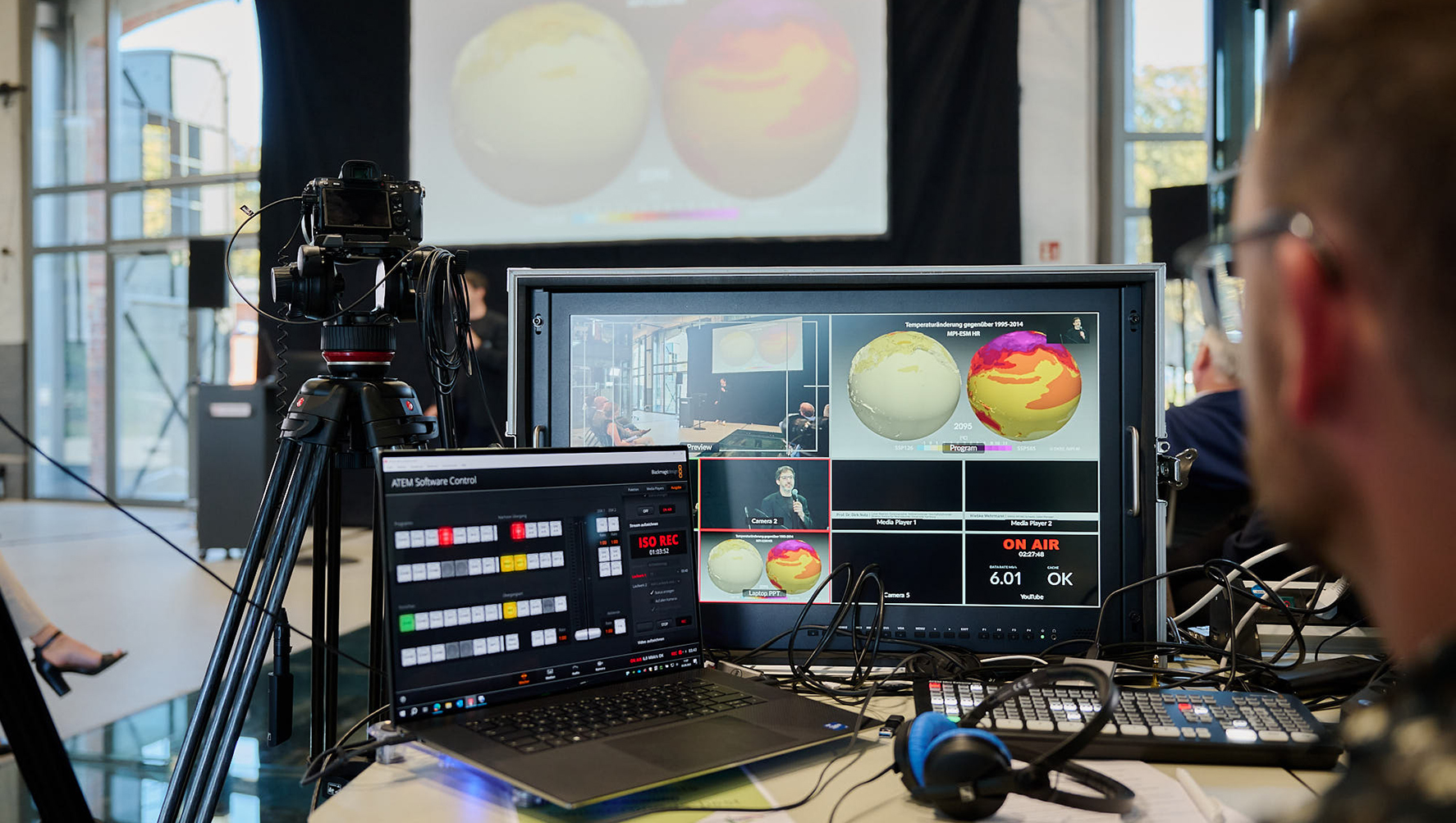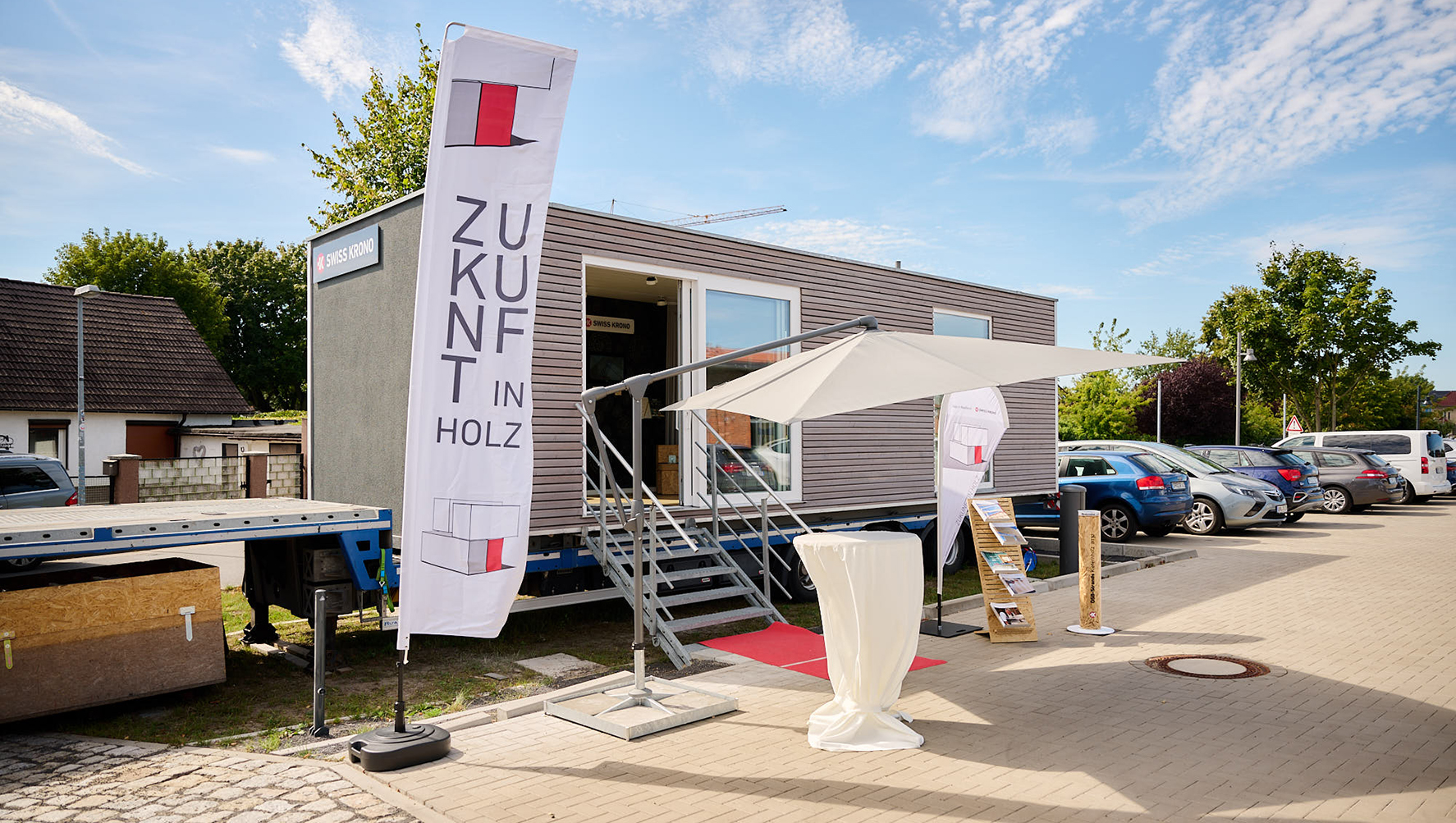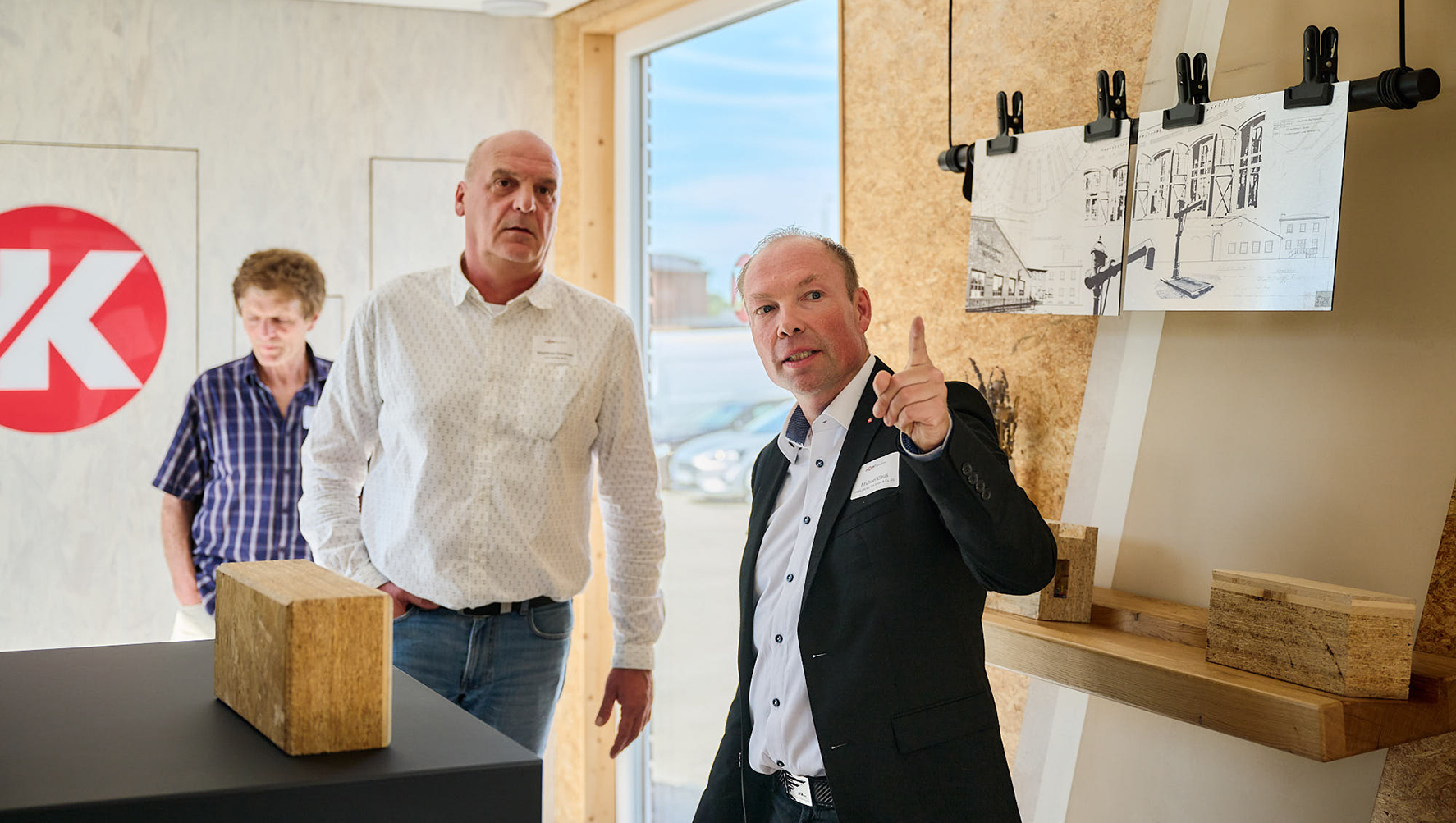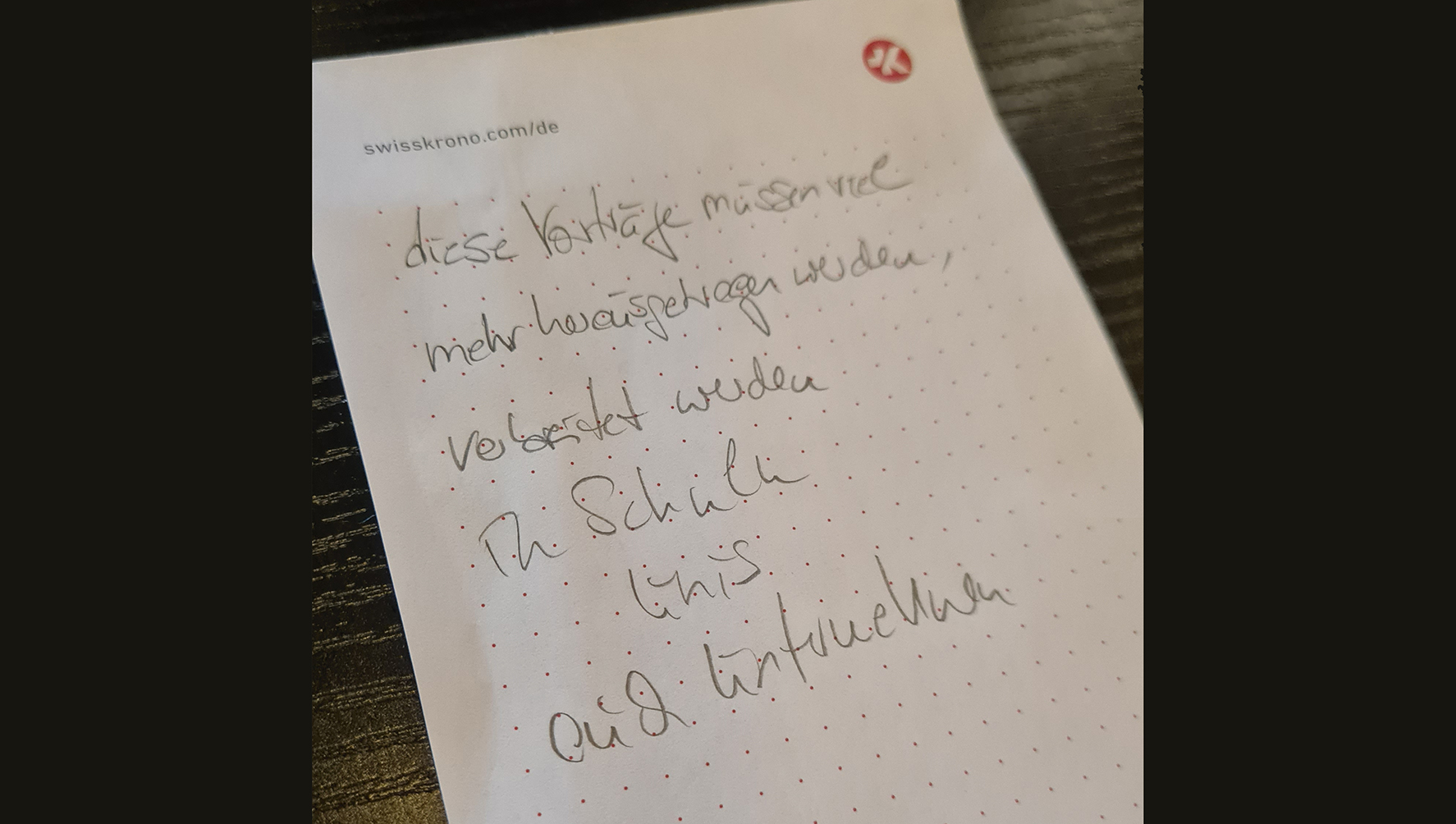The DESIGNING THE FUTURE Event: Focus on Sustainability, Design and Inspirations
News | SWISS KRONO Switzerland
SWISS KRONO addressed some truly important themes at its DESIGNING THE FUTURE event: climate change, sustainability and the outlook for the future. These things matter to each and every one of us, and as a producer of wood-based (engineered) wood materials we naturally did our level best to demonstrate the relevance of our production activities and products. In order to share information and opinions on the status quo and our tasks going forwards, we invited architects and planers, users, merchants and industry associations to join us on the 5th of September in the Design Station in Wittstock and on September 12th at IDF34 in Löhne. The event was also streamed live on YouTube from the Design Station for those who were unable to attend personally.
Prof. Dr. Dirk Notz, a prominent climate researcher and coauthor of the IPCC’s Sixth Assessment Report (AR6), kicked off the presentations. Watching seinem Vortrag one can be forgiven for feeling frightened. But Professor Notz skilfully steered this unease into a constructive approach. He summed up everything we need to know about climate change as follows: It’s real. We are the cause. It’s dangerous. Experts agree. But there is (still) hope. “The scientific facts about climate change aren’t actually negotiable. But our actions as a society are, and every single one of us is called upon here,” he stated. At the end of the day, it comes down to the fact that we have to reduce net carbon emissions to zero worldwide in order to halt global warming. Prof. Notz pointed out that buildings and construction account for a whopping 40% of worldwide carbon emissions. About eight per cent is caused by cement production alone. “This means that the construction sector has major potential for turning this around,” he said.
Then it was the turn of Ahmed Al Samarraie, an expert on building ecology, who drew attention to Blick sehr konkret auf Holzwerkstoffe und deren Emissionen. As the head of the German Prefabricated Timber Construction Association, he works to overcome inhibitions and obstacles which are still standing in the way of timber construction. Al Samarraie focussed attention on how VOCs (volatile organic compounds) affect the quality of indoor air, showing impressively how this depends on a multitude of factors. Citing the main findings of the recently released HolnRaLU and GesundHOLZ studies, he stressed that natural VOCs tend to diminish rapidly on their own and have no primary genotoxic potential. In respect of ordinances, Al Samarraie make it clear that regulatory
action is needed to additionally strengthen the role of wood. The metric of total VOCs (TVOCs), for example, is completely unsuited for inclusion as a target in construction contracts. He added that the benchmark system and the requirements of MVv TB (the German model administrative regulation on technical construction requirements) also need to be corrected.
After the lunch break, Prof. Dr. Joachim Hasch, who heads the SWISS KRONO Group’s Innovation Centre for Research Development and Technology, described how sustainability is being addressed, lived and implemented within the group. SWISS KRONO’s responsibility is to offer a broad range of wood-based products to support building with timber. A key aspect here is that the wood used comes from sustainably managed forests. SWISS KRONO is also constantly striving to slash its own CO2 emissions. Only five per cent of them are directly generated within the company. Purchased energy accounts for another 17%, but the lion’s share comes from inputs – and adhesives more than anything else. We’re steadily improving across all areas: with better company buildings and more efficient energy systems, by switching to sustainable power suppliers and by pressuring suppliers to also make a contribution, amongst other things. In addition, we’re actively involved in developing adhesives and very successfully pursuing several avenues here, for example with lignin and starch. “But all this will also impact costs – something that we all have to accept,” said Prof. Hasch. “Otherwise we’ll never accomplish the transformation.” He cited two examples of SWISS KRONO’s in-house development results: the BE.YOND particleboard consisting to 98% of biological materials and the COREPEL design flooring, which causes 30% less CO2 emissions.
Sabrina Wieland, the head of design at Schattdecor, then took the floor and pointed out how the theme of sustainability is influencing not only the economy but our culture, lifestyle and consumption and thus also how building interiors are designed. As examples, she cited the fashion industry and mobility sectors, urban planning and architecture, furniture and designing interior spaces. Across all of these applications, high quality and timeless design are essential for offering products that will remain in use as long as possible. Materials, use and design all closely interact. Schattdecor pursues a clear goal with its products: namely to instil greater environmental awareness with clear, streamlined designs, high quality and resource-conserving materials.
The series of presentations was concluded by SWISS KRONO application technician Harald Sauter, who presented OSB products for meeting special challenges. After briefly explaining how OSB boards are produced, he highlighted a few high-performing products: OSB/3 sensitive made of Populus wood, which is characterised by especially low emissions, flame-retardant OSB/3 stop fire and the flexible MAGNUMBOARD® OSB timber construction system.
After the presentations in Wittstock, interested participants were taken on a tour of the Design Station during which the individual steps involved in making a finished product were explained in detail. For everyone who is interested in watching the complete presentations, we have published all of them as well as the podium discussions on our YouTube channel.
Big thanks go to everyone who helped make these two events such a great success. We are especially indebted to the speakers, who fascinated everyone with their expertise. The podium discussions were excellently interconnected and opened up new perspectives. We naturally also want to thank everyone who participated on site and watched via livestream. They contributed to creating a lively event in a pleasant ambience. We’re delighted with all the positive feedback we have received on the presentations, the locations and the event’s organisation.

